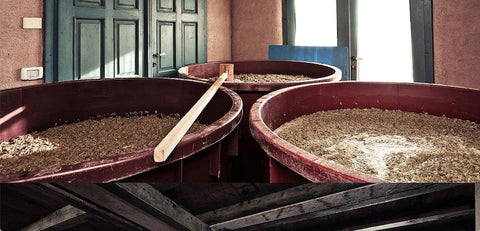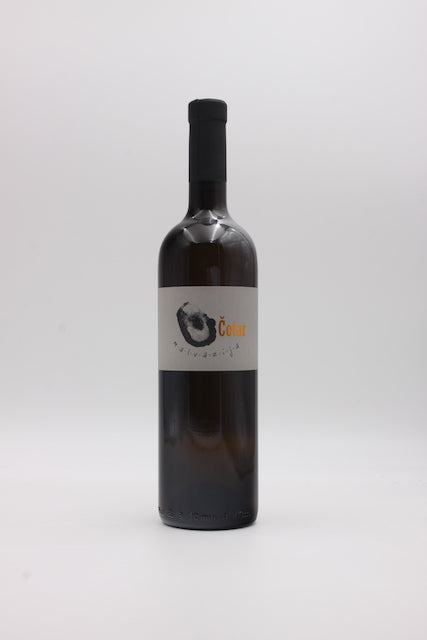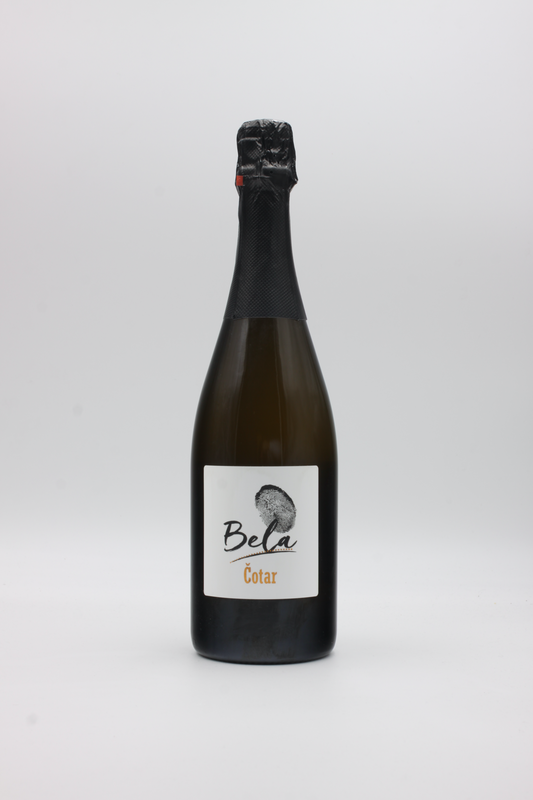Free shipping within Austria from € 99
Free shipping to Germany from € 120
Shipping costs within the EU
Payment methods
Čotar
Gorjansko – Slowenien

Crafted with skill and deep experience, the Čotars capture the essence of the Karst and its unique viticultural landscape.
Their wines speak of the nearby sea, of the mild but often wind-swept climate, of the barren, stony soils—and of times past, when farmers would bring wine to the fields for strength and sustenance. Čotar’s wines brim with energy and vitality. They have power and depth, yet remain light-footed and surprisingly low in alcohol.
THE KARST
Rocky, harsh, and windswept. Rugged and wild, scattered with stone and dry scrublands. Farms are dotted across the landscape, often standing alone or clustered in small groups of three or four houses. From between the woodlands, the sea reveals itself time and again. Here and there, you’ll come across a church or an osmiza—one of the region’s legendary seasonal taverns where the people of Trieste gather on weekends to feast and relax. And every so often, within this sparse but spectacular world, a vineyard appears.
BEGINNINGS
The story of the Čotar winery began in 1974 in Gorjansko, Slovenia, just a few kilometers beyond the Italian border. That year, Branko Čotar decided to make wine from two existing vineyards to serve at his osmiza. He made a Teran, the ubiquitous red wine of the region known for its often aggressive acidity, and a white wine he simply named Kraško belo – “the white from the Karst.”
Over the following years, more and more people came to the osmiza for his wine.
Eventually, wine sales began to outpace the earnings from his tavern, and Branko found himself increasingly passionate about working with the vines. So he became a winemaker. In 1990, he bottled his first vintage (1988) and began developing his own cellar—an ambitious project he would pursue for nearly three decades, carving it directly into the rocky Karst terrain.
With growing support from his son Vasja, he built the estate into a benchmark for authentic, uncompromising wines. Systemic chemicals, widespread at the time, held no interest for him—nor did cultured yeasts or filtration.
Much like Stanko Radikon further west, Branko followed his own deeply personal vision. It had little in common with mainstream oenological norms of the time, but a lot to do with skin maceration (especially for white wines) and extended aging in barrel. Yet people came anyway, seeking out his wines.
THE ESTATE
What began with just two vineyards has grown into seven over the years: Dusche, Polje, Kot, Ivanij, Grad, Olaria, and Pecina. All are characterized by a thin layer of terra rossa (red soil) over the limestone bedrock of the Karst. Together, they now cover 7.5 hectares of vines.
In addition to Vitovska, Malvasia Istriana, and Teran—the three native varieties of the Karst—the Čotars also cultivate Sauvignon Blanc, Chardonnay, Merlot, and Cabernet Sauvignon. Although these latter grapes are French in origin, they have been grown in the area around Trieste for centuries.
The Čotars harvest late—only once the grapes have reached full phenolic ripeness, a logical approach for winemakers whose wines are defined by their firm tannic structure.
The cellar, which once held just a few barrels, now spans three levels. With skill and intuition, the Čotars strive to express the purest essence of what the Karst imparts to their grapes.
Their wines speak of the nearby sea, the mild but blustery climate, and the sparse, stony soils. But also of a time when wine was sustenance for farmers in the fields. Čotar’s wines burst with energy and vitality. Despite the late harvests, they are often surprisingly low in alcohol—and yet always powerful and deep.







